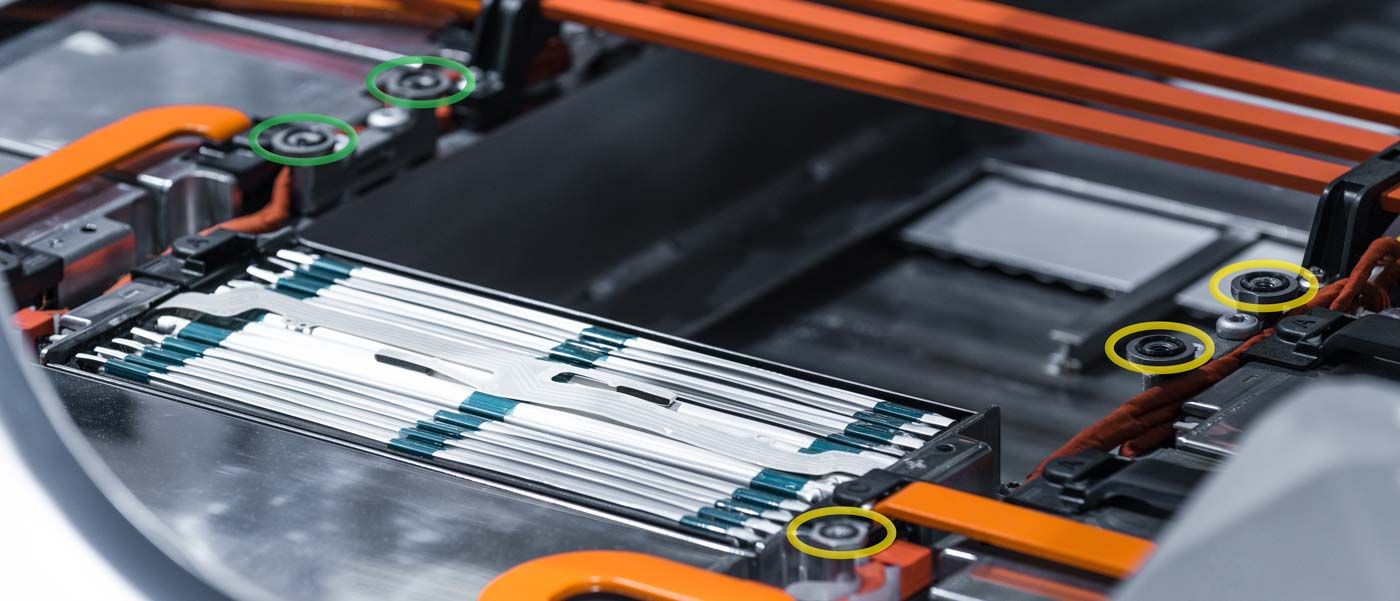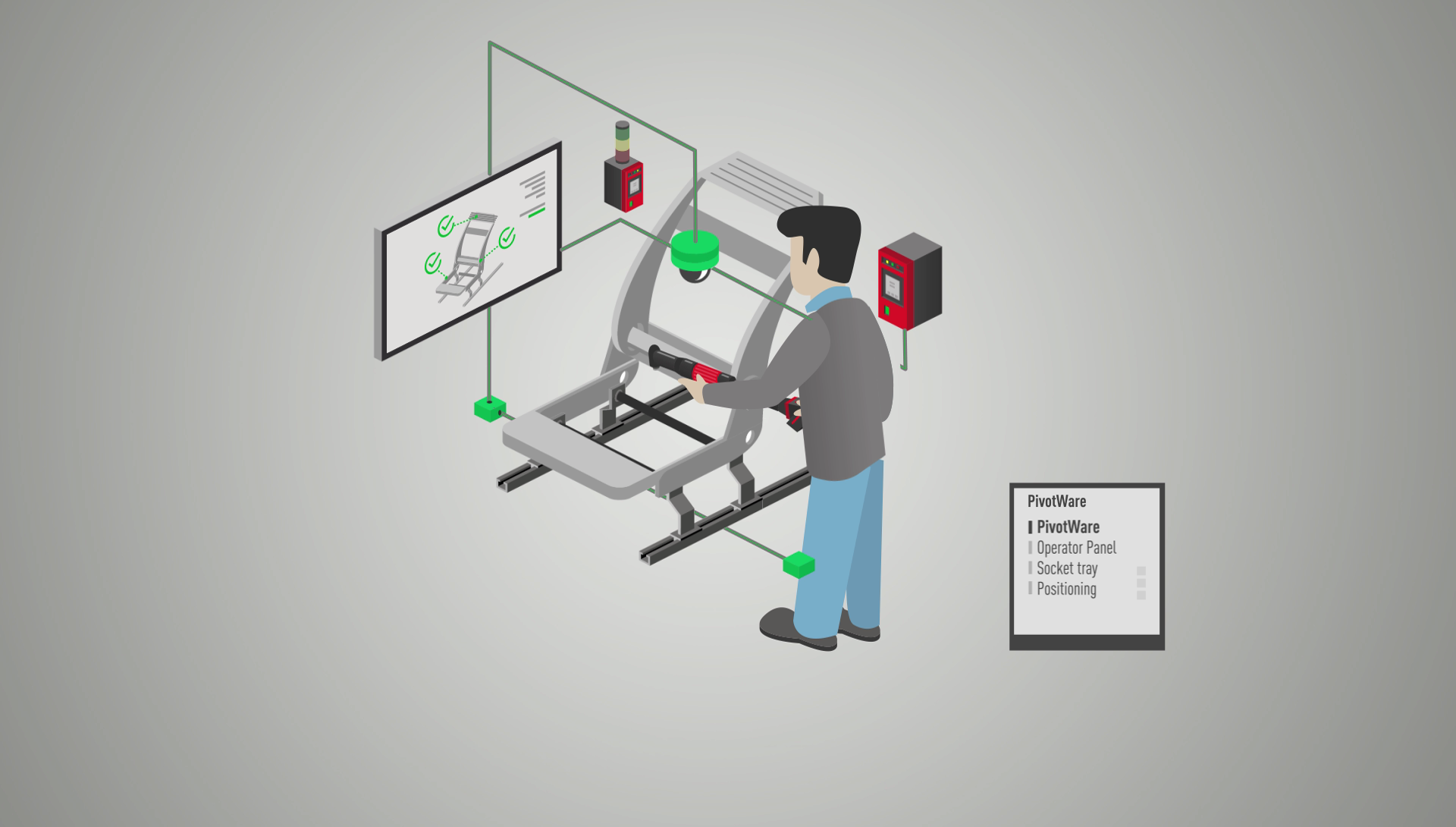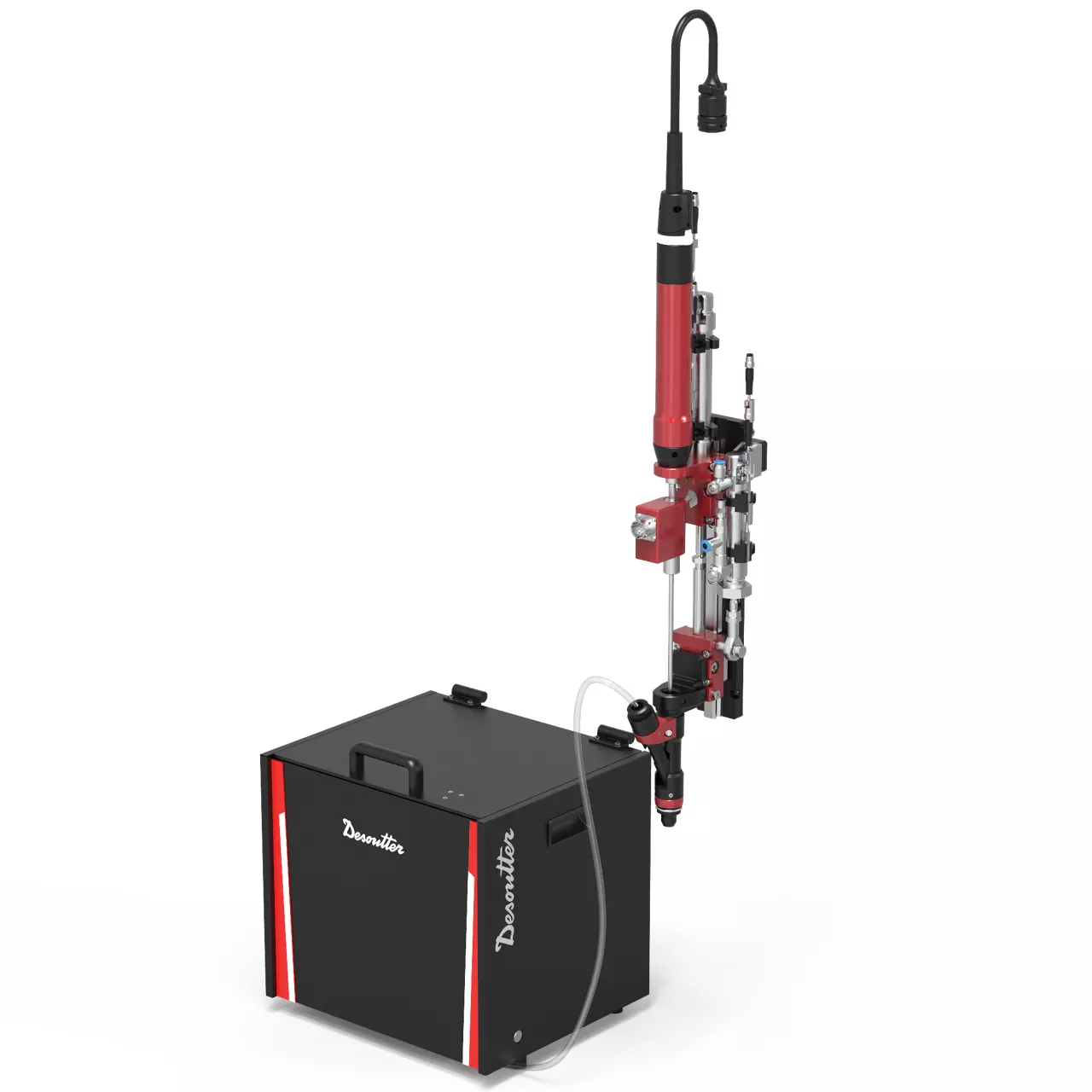Zvýšení produktivity a udržení náskoku díky našemu průvodci inteligentní výrobou na montážní lince.
Objevte strategie pro procesy řízené daty, celkovou sledovatelnost, efektivní správu nářadí, lehkou automatizaci a další. Prozkoumejte EKOSYSTÉM společnosti Desoutter, kde najdete odborná řešení.
Zvýšení produktivity a inteligentnější práce jsou klíčem k udržení konkurenční výhody. Zavedení inteligentních výrobních procesů, které se v průběhu času vyvíjejí spolu s vaším podnikem, vám může zajistit agilitu, kterou potřebujete k přenastavení výrobních procesů v reakci na výkyvy trhu, a flexibilitu pro rychlé zavádění nových technologií a lepších způsobů práce. Průmysl 4.0 stanovuje zásady inteligentní výroby, ale proměnit tuto teorii v realitu v rušném výrobním prostředí může být náročné. Výrobci potřebují praktické způsoby, jak využít a uplatnit potenciál Průmyslu 4.0 ke zlepšení provozní efektivity, odstranění reworku a zvýšení marží. To zahrnuje možnost kdykoli plánovat, navrhovat a průběžně zlepšovat jednotlivé procesy.
Jak tedy může být konektivita, internet věcí (IoT), vytěžování dat a bezproblémová integrace aplikována tak, aby to přineslo velké výhody pro váš podnik? Klíčem je postupné budování, dokud nebudete mít chytrý výrobní ekosystém, který zahrnuje vše od chytrých montážního nářadí až po výkonnou analýzu dat.
Tady jsou nejlepší tipy společnosti Desoutter’pro vývoj chytrých montážních linek, které jsou škálovatelné, přizpůsobitelné a připravené na budoucnost.
2. Dosažení úplné sledovatelnosti
Správná práce napoprvé a úplná sledovatelnost jsou dva další přínosy Průmyslu 4.0 v praxi. Systémy řízení procesů mohou efektivně vést pracovníky při plnění různorodých úkolů a podporovat strategii nulové chybovosti. Rozhraní člověk-stroj (HMI) a infračervené polohování mohou být použity k tomu, aby operátorovi přesně ukázali, jaké nářadí a komponenty má použít a kde je upevnit (poziční systém). Systém pak ověří, zda byl každý krok proveden správně a teprve poté umožní obsluze přejít k další fázi. Tyto systémy řízení procesu usnadňují splnění požadavků na validaci a sledovatelnost.
4. Připojte své nářadí do sítě
Správa nářadí může být časově náročná, zejména u více montážních linek. Použijte bezdrátové nářadí k:
- Redukujte kabeláž
.
- Zaveďte možnost použití jediného připojovacího bodu pro komunikaci mezi firemní sítí a skupinami nářadí
.
Tento síťový přístup využívá inteligentní rozbočovač, který zjednodušuje nastavování nářadí. Inteligentní rozbočovač může spravovat až 20 akumulátorových nářadí, z nichž každé lze doladit tak, aby vyhovoval specifickým požadavkům dané aplikace. Chytrý rozbočovač navíc umožňuje neuvěřitelně snadné vyvážení linky . Spárování nářadí pomocí technologie RFID může u některých inteligentních rozbočovačů trvat méně než 30 sekund.
Chytré rozbočovače také shromažďují údaje o nářadí, což usnadňuje generování reportů. Tato úroveň agility znamená, že veškerá nastavení montážní linky lze znovu nakonfigurovat během několika minut a nikoli hodin, což snižuje prostoje a maximalizuje produktivitu.
5. Naučte se milovat koboty
Chytrá výroba vyžaduje nové formy spolupráce mezi lidmi, stroji a softwarem. Stále častější používání kolaborativních robotů (cobotů) je hnací silou vývoje lehčího, flexibilnějšího nářadí, které zachovává nejvyšší úroveň bezpečnosti. Toto nářadí lze snadno zabudovat do robota a bude bezproblémově pracovat vedle lidské obsluhy. Spolu mohou zajistit výjimečný výkon, interaktivitu a sledovatelnost při automatizované montáži.
Toto nářadí je ideální pro nenáročné aplikace, jako je montáž automobilových sedadel a práce s podvozkem, zejména pokud je nářadí používání v mnoha různých horizontálních a vertikálních pozicích.
7. Najděte si správného partnera
Jen vy víte, které řešení je pro vaši aplikaci a váš rozpočet v daném okamžiku nejlepší. Ujistěte se, že jste si vybrali technologického partnera se správnými technickými a průmyslovými zkušenostmi, který vám může nabídnout posouzení vaší linky a široký výběr flexibilních a škálovatelných řešení, aniž byste museli obětovat funkčnost, interoperabilitu a kompatibilitu směrem dopředu. Ekosystém založený na spolupráci mezi dodavatelem řešení pro výrobní procesy a odborníky ve vaší společnosti je klíčový. Propojuje lidi i technologie, aby bylo možné dodat správné řešení ve správný čas.
Pokud se chcete dozvědět více o řešeních výrobních procesů (utahovací a vrtací řešení), navštivte svého místního odborníka na ekosystém Desoutter.



